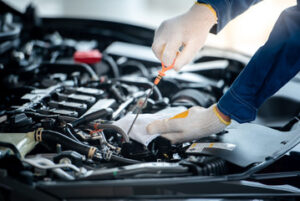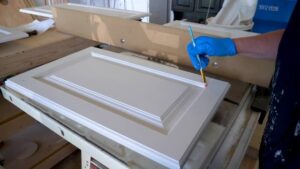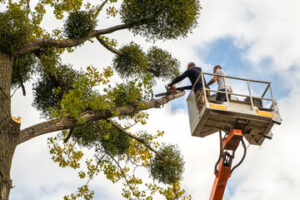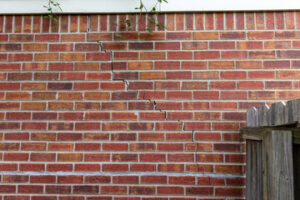Naturopaths believe that cures don’t come from bottles of prescription medications. Instead, wellness is achieved when the deepest root causes of imbalance are addressed.

Homeopathy, which uses highly diluted substances to stimulate the body’s natural self-healing process is one such treatment. Another is hydrotherapy, which utilizes water in many forms and temperatures to improve circulation and promote healing. Call Dr. Anne Berkeley PLLC for trusted advice.
Naturopathic medicine is a comprehensive approach to health that seeks to unlock the body’s natural healing processes. It focuses on identifying and treating the root cause rather than suppressing symptoms. In addition, naturopathic doctors promote healthy lifestyle habits and educate their patients about disease prevention and the power of natural treatments.
As part of a patient’s overall wellness plan, an ND will conduct a comprehensive physical examination. They will also explore a patient’s diet, lifestyle habits and potential risk factors for future health issues. Upon collecting this information, an ND will create a personalized treatment plan. This may include dietary recommendations, herbal medicine, nutritional supplements, exercise therapy and other natural treatments.
Throughout history, people believed that health was created by restoring the body to balance. They also believed that the same vital force that made up nature and the universe flowed through each person, and disconnection from this source caused illness. Early naturopaths realized that if this life force could be restored, the body would naturally heal itself.
Naturopathy is based on six core principles: 1) The healing power of nature, 2) identify and treat the root cause, 3) first do no harm, 4) treat the whole person, 5) doctor as teacher, and 6) prevention as the best cure. These guiding principles help naturopaths identify and remove obstacles to healing, and support the body’s inherent self-healing process.
In addition to a standard medical curriculum, naturopathic doctors receive extensive training in the fields of clinical nutrition, acupuncture, botanical medicine, homeopathy, physical medicine and IV nutritional therapies. They are also required to complete four years of graduate-level study at accredited institutions and undergo rigorous testing and licensing exams to ensure professionalism and competency.
The practice of naturopathy is an effective, safe and gentle way to restore the body’s natural balance and encourage healing. By incorporating naturopathic treatment into your overall wellness strategy, you can enjoy improved energy, reduced stress and a more holistic approach to healthcare. If you’re interested in learning more about naturopathic medicine, talk to your GP or consider visiting a registered naturopathic doctor for guidance on your journey to wellness.
What Is Naturopathic Medicine About?
The back-to-school season is a time to focus on academic success, but it is also important to nurture your child’s well-being from the inside out. Naturopathic medicine can help your child stay healthy and balanced so they can excel in the classroom and beyond.
The core of naturopathic treatment is to use natural remedies and practices to stimulate the body’s innate healing powers. Naturopathic doctors (NDs) are trained in a broad range of natural healing modalities including botanical medicine, nutrition, hydrotherapy, acupuncture, homeopathy, and physical medicine. NDs employ these treatments to address the root cause of a condition rather than just alleviating symptoms.
In addition to using natural treatments, naturopathy stresses disease prevention and patient education. Patients are encouraged to take responsibility for their own health and wellness by implementing healthy lifestyle changes and receiving regular screenings. In addition, naturopaths are committed to promoting holistic and integrative care by working with traditional doctors to support modern medical treatments.
NDs believe that a person’s mind, body and spirit are connected. They view a person as a whole being and believe that the same vital force that makes up the universe and nature flows through everyone, including those with dis-ease. Early naturopaths believed that this force could be restored with proper diet, water treatments, rest, sunshine and fasting.
Naturopathy grew out of the “Water Cure” movement in Europe that flourished in the early 1800s. This movement was based on the belief that illnesses are caused by improper water and air exposure, as well as lack of exercise and a healthy diet. Practitioners used baths, massages, herbal medicines and other natural treatments to treat a range of conditions.
The naturopathic approach to treating illness takes into account that each individual is unique. This is why naturopaths are trained to provide comprehensive physical exams and to develop individualized treatment plans that align with a patient’s health goals. During a consultation, naturopaths may recommend dietary changes, nutritional supplements, herbal medicine, physical therapy or homeopathy. However, it is important to talk to your doctor before incorporating any of these naturopathic treatments into your routine as some can interact with conventional treatments.
How Can Naturopathic Medicine Help Me?
The treatment plans naturopathic doctors (NDs) prescribe are tailored to each patient. They take into account the genetic, environmental and behavioral/lifestyle factors that impact one’s health. At an initial appointment, NDs typically spend up to an hour with patients discussing their health history and the underlying causes of their illness. NDs believe the body’s innate healing mechanisms can be stimulated by identifying and treating the root cause of illness, rather than focusing on individual presenting symptoms.
Naturopathic medicine believes the human body is naturally healthy and able to heal itself when it is given the proper conditions, such as a clean environment, proper diet, rest, exercise and a positive mindset. Naturopaths aim to inspire, educate and empower patients to take control of their own health through preventative measures, so they can live the life they envision.
Using laboratory tests, NDs will develop a treatment plan that combines both traditional and natural therapies. For example, physical medicine may include therapeutic massage, spinal manipulation techniques such as adjustments, physiotherapy using heat and cold, therapeutic ultrasound, diathermy and hydrotherapy. In addition, naturopathic physicians are trained in a variety of mind-body techniques to treat the emotional and mental aspects of illness.
In a similar vein, naturopathic doctors believe that the body’s energy can be positively impacted by certain foods and herbs. This approach can be helpful in treating conditions such as fatigue, migraines and gastrointestinal complaints.
Early naturopaths believed that the vital force that made up the universe and nature also flowed through man, and it was his disconnection from this source that caused illness. This belief led to the use of water treatments, sun therapy, rest and diet as a way to promote wellness. Later, naturopaths would add things like vitamins, homeopathy, acupuncture and herbs to this mix.
Many patients are turning to naturopathy because they don’t want to be dependent on powerful pharmaceutical drugs that have side effects. They are also concerned about the long-term effectiveness of these medications and would prefer to find a treatment plan that is both safe and effective. For these reasons, it is important to seek a naturopath who has been trained in an accredited 4-year program.
How Can Naturopathic Medicine Help You?
Unlike conventional medicine, which tends to focus on treating symptoms and managing conditions, naturopathic doctors seek to find the root cause of your health problems. This involves a more thorough assessment of your condition and lifestyle, including diet and habits. Then, they work with you to create a comprehensive treatment plan that can address the root of your problem. This might include herbal medicine, acupuncture, physical therapy, and nutritional supplements.
Naturopaths believe that the body has its own innate healing system. This self-organizing and intelligent process, known as vis medicatrix naturae, or “the healing power of nature,” establishes, maintains, and restores health. It is naturopathy’s role to stimulate, support and augment this process.
One of the main goals of naturopathic care is to educate patients on the health-promoting aspects of a healthy lifestyle. This includes the importance of routine screenings, healthy eating habits, and stress management techniques.
In addition, naturopathic care often incorporates treatments like acupuncture and massage. These practices can reduce pain, anxiety and nausea, as well as improve blood circulation and lymphatic flow. And as a holistic approach, naturopathy can help you achieve a more balanced state of mind, which can have a positive impact on your mental health and wellbeing.
Conventional medicine may offer effective short-term results, but these powerful medications can also have harmful side effects in the long term. The risk of side effects from naturopathic care is minimal, as practitioners focus on improving overall health and wellness.
Naturopathic physicians are trained in a variety of modalities, making them better equipped to identify and treat underlying health issues than traditional doctors. These modalities include clinical nutrition, herbal medicine, homeopathy, acupuncture, physical therapy, and IV nutritional therapies. And, since naturopathic doctors are highly qualified, they can use these modalities in combination to provide you with the best possible care.
If you’re interested in naturopathic care, talk to your regular doctor about it. This way, they can make sure that naturopathic treatments are safe and won’t interfere with your current medication. And they can also advise you on the best dietary and exercise habits for your unique needs.








